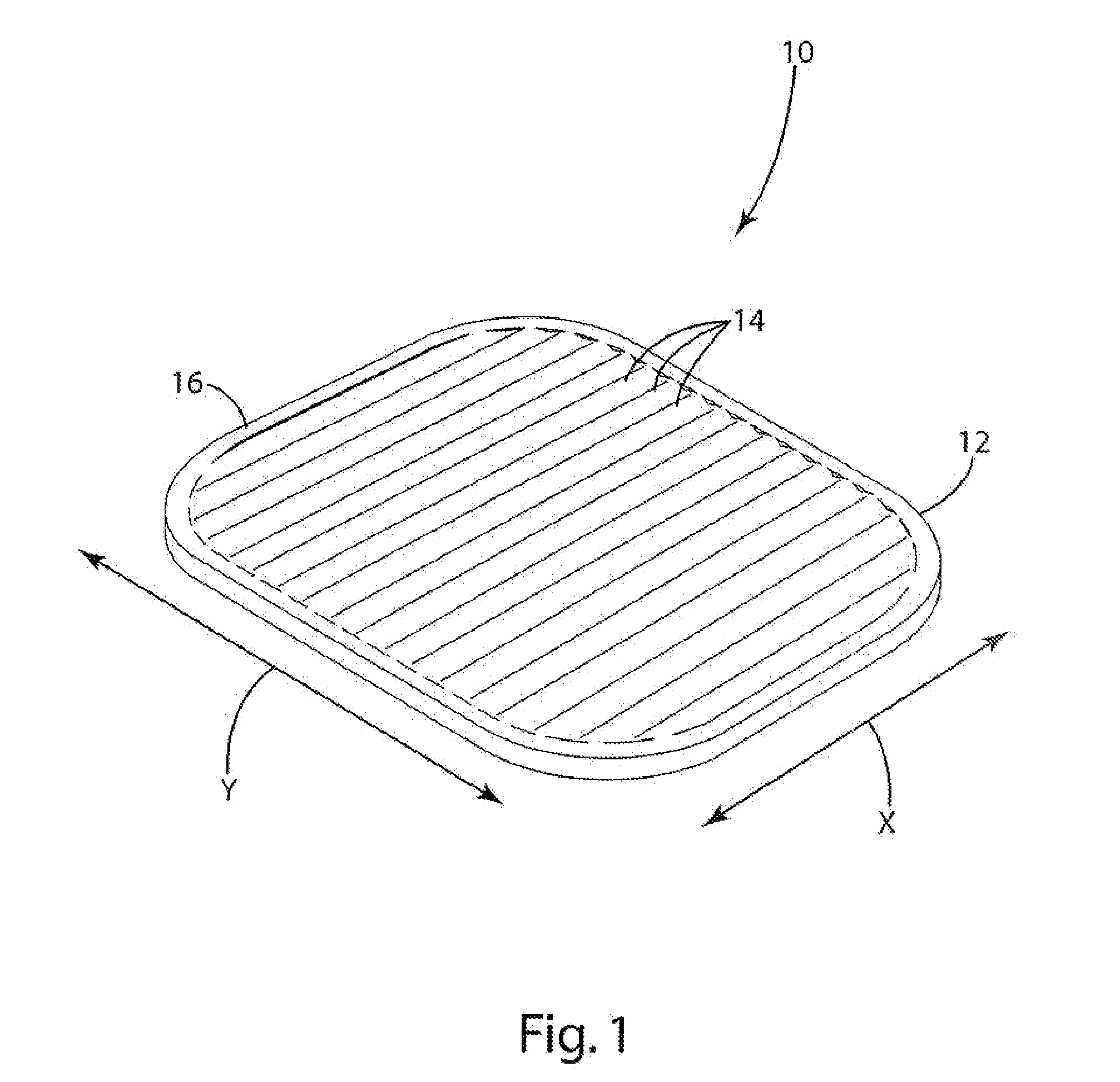Load bearing surface
a technology of load bearings and elastomeric materials, applied in the field of load bearing surfaces, can solve the problems of inability to tune the characteristics of conventional molded seats, uncomfortable and sometimes ergonomically unacceptable load bearing surfaces, and inconvenient manufacturing, etc., to achieve the effect of increasing the alignment of the crystalline structure of the elastomeric material, and reducing the cost of manufacturing
- Summary
- Abstract
- Description
- Claims
- Application Information
AI Technical Summary
Benefits of technology
Problems solved by technology
Method used
Image
Examples
Embodiment Construction
[0046] A load bearing surface 10 according to one embodiment of the present invention is shown in FIG. 1. The load bearing surface 10 shown in FIG. 1 is a molded membrane that may be suspended from a support structure, such as a chair seat frame 100 (shown in FIGS. 18 and 19). The load bearing surface 10 includes support characteristics that differ in different directions. For example, the load bearing surface may provide significant elastic support in the x direction while providing relatively little support in the y direction. This “decoupling” of the support characteristics of the load bearing surface provides a high degree of comfort. By way of disclosure, the present invention is described in connection with various alternative embodiments intended primarily for use in seating applications. The present invention is not, however, limited to use in seating applications, but may also be incorporated into other load bearing applications. The support characteristics of the molded me...
PUM
| Property | Measurement | Unit |
|---|---|---|
| thickness | aaaaa | aaaaa |
| thickness | aaaaa | aaaaa |
| mechanical structure | aaaaa | aaaaa |
Abstract
Description
Claims
Application Information
 Login to View More
Login to View More - R&D
- Intellectual Property
- Life Sciences
- Materials
- Tech Scout
- Unparalleled Data Quality
- Higher Quality Content
- 60% Fewer Hallucinations
Browse by: Latest US Patents, China's latest patents, Technical Efficacy Thesaurus, Application Domain, Technology Topic, Popular Technical Reports.
© 2025 PatSnap. All rights reserved.Legal|Privacy policy|Modern Slavery Act Transparency Statement|Sitemap|About US| Contact US: help@patsnap.com



